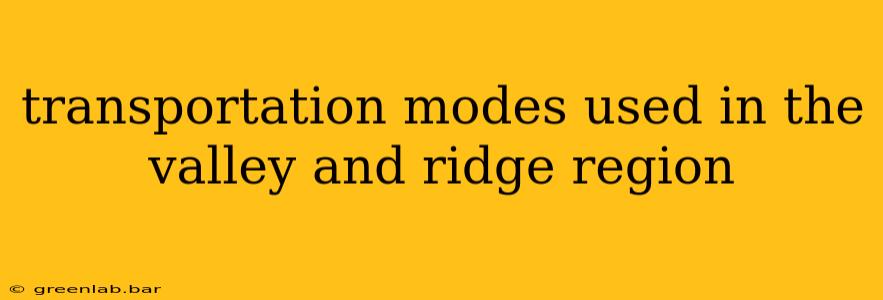The Valley and Ridge province of the Appalachian Mountains, stretching across the eastern United States, presents a unique geographical challenge and opportunity for transportation. Its characteristic parallel valleys and ridges dictate the development of its transportation infrastructure, shaping the modes used and influencing economic activity. This exploration delves into the primary transportation modes utilized within this region, highlighting their historical significance and contemporary relevance.
Historical Context: Shaping the Transportation Network
The rugged terrain of the Valley and Ridge initially limited transportation options. Early settlers relied heavily on waterways for travel and trade. Rivers like the Shenandoah and Susquehanna provided crucial arteries, facilitating movement of goods and people along their courses. However, the discontinuous nature of navigable waterways necessitated the development of other modes. Animal-powered transport, such as horses and mules, became essential for traversing the challenging mountain passes and connecting isolated communities. The construction of early roads was a slow and arduous process, often following the contours of the valleys. These early roads, often unpaved, were critical but limited in their capacity and efficiency.
Modern Transportation Infrastructure: A Multimodal Approach
Today, the Valley and Ridge region boasts a more diverse transportation network, though the inherent geographical constraints continue to shape its character.
1. Highways and Roads: The Backbone of the Region
The development of the highway system has significantly improved connectivity within and beyond the region. Major interstate highways, such as I-81, run through the valleys, providing efficient north-south transportation links. However, the challenging terrain still necessitates numerous curves and inclines, influencing travel times and fuel consumption. The region also features a network of state and local roads, many of which serve smaller communities nestled within the valleys and alongside the ridges. These roads, while crucial for local access, often experience limitations due to their winding nature and susceptibility to weather-related disruptions.
2. Railroads: A Historical and Continuing Role
Railroads played a vital role in the region's industrial development, facilitating the transport of coal, timber, and other resources. Although the prominence of rail has diminished compared to its historical peak, freight rail lines continue to operate, transporting goods along major corridors. Passenger rail service, while less extensive, remains important for connecting some communities to larger metropolitan areas. The mountainous terrain, however, continues to present challenges for rail expansion and modernization.
3. Air Transportation: Connecting to the Wider World
Several airports serve the Valley and Ridge region, offering connections to major national and international hubs. These airports primarily cater to commercial air travel and support regional economic activity. However, the relative sparsity of air travel compared to other modes of transportation reflects the region's overall population density and economic structure. Smaller airfields and private airstrips serve specific local needs.
4. Waterways: A Diminished but Persistent Role
While less dominant than in the past, waterways still play a role, particularly for recreational purposes. Sections of rivers remain navigable for smaller vessels, facilitating tourism and leisure activities. The potential for increased barge traffic on some rivers remains a subject of ongoing discussion, contingent on infrastructure investments and environmental considerations.
Future Trends and Challenges
The future of transportation in the Valley and Ridge region will likely involve a combination of enhancing existing infrastructure and exploring new technologies. Investing in road improvements, upgrading rail lines, and expanding high-speed internet access to support telework will be crucial for economic development and improved quality of life. Exploring sustainable transportation options, such as electric vehicle charging infrastructure and improved public transportation networks, will be essential to meet environmental goals and enhance regional sustainability. The unique geographic challenges posed by the region's topography will continue to shape transportation planning and investment decisions for years to come.

